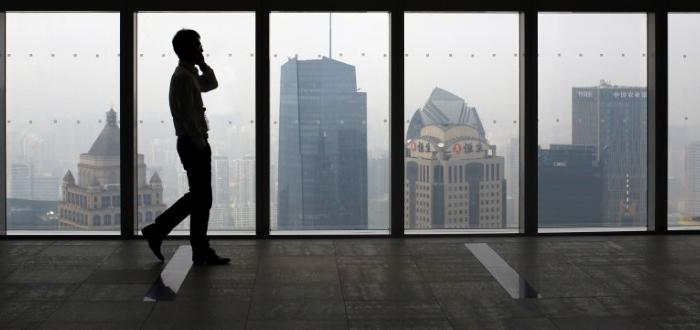BEIJING—China’s services sector chalked its slowest growth in over a year last month as the volume of new orders dried up, a private survey showed, suggesting a further loss in economic momentum as a rough 2018 draws to a close.
The slowdown in the services sector—which accounts for more than half of China’s economy and is an important generator of jobs—is particularly worrying for policy makers as they have been counting on it to offset rising pressure on exports from a heated trade row with the United States.
The Caixin/Markit services purchasing managers’ index (PMI) fell to 50.8 in October from 53.1 in September, the lowest since September 2017, and creeping closer to the 50 line that separates growth from contraction.
Any prolonged weakness in the services sector would complicate Beijing’s efforts to steady growth in the face of the trade dispute with the United States, a manufacturing slowdown at home and campaigns to curb excess capacity, pollution and corporate debt.
A cooling this year of the Chinese property market, another major contributor to the economy, has also weighed on demand for real estate services.
Significantly, Caixin’s sub-index for new business orders showed virtually no growth at 50.1 in October, down from 52.4 the previous month and the worst performance since a contraction in November 2008 during the global financial crisis.
That dented business confidence towards future activity to a three-month low, according to the survey.
The nation’s financial services sector was especially hit hard by the subdued market conditions.
China is leaning on services, particularly high value-added services in finance and technology, to reduce the economy’s traditional reliance on heavy industry and investment.
Some firms surveyed by Caixin also expressed concerns of the possible impact of the Sino-U.S. trade dispute on future activity.
The impact of the trade frictions on business confidence, and real activity, was starting to show in the broader economy.
A separate Caixin survey published last week showed China’s manufacturing sector hardly grew in October after stalling in the previous month.
October was the first full month after the latest U.S. tariffs went into effect.
Washington and Beijing slapped additional tariffs on each other’s goods on Sept. 24, and U.S. President Donald Trump has threatened to hit China with more duties.
Caixin’s composite manufacturing and services PMI, also released on Nov. 4, fell to 50.5 in October from 52.1 a month earlier. That was the lowest level since June 2016.
Offering a glimmer of hope, Trump and Chinese leader Xi Jinping had what the U.S. president described as a “very good” phone discussion about trade last week.
Support for Private Firms
Beijing has already stepped up liquidity support for the economy by cutting the level of cash banks must hold as reserves four times so far this year, and is also boosting fiscal spending.Xi on Thursday promised to help China’s struggling private firms, which dominate the services sector.
He pledged to roll out more tax cuts and financial aid, underscoring government resolve to back-stop the private sector as the world’s second-largest economy slows.
Gross domestic product (GDP) grew by a slower-than-expected 6.5 percent in the third quarter, its weakest since the global financial crisis.
After declining for the first time in more than two years in September, employment in China’s services sector increased at the start of the fourth quarter as some businesses hired additional workers to expand business operations, the Caixin survey showed.
While the uptick would provide some respite to policymakers concerned about unemployment, the rate of payroll growth was marginal and weaker than the historical trend, the Caixin survey shows.
Economists say business conditions will get worse before they can get better.






Friends Read Free